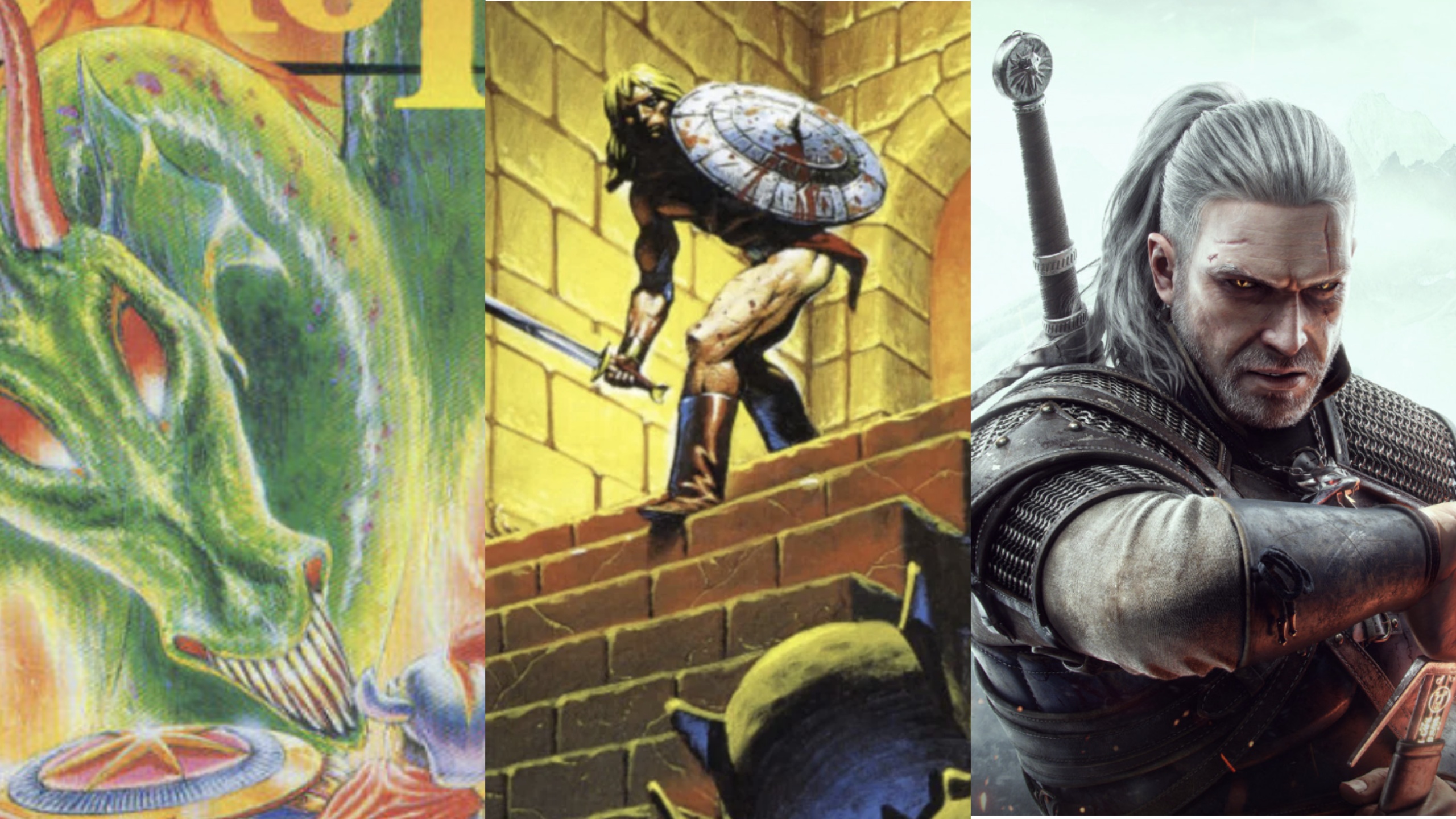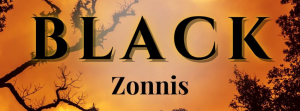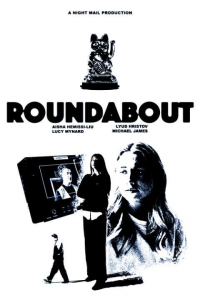
Few genres are as synonymous with innovation as role-playing games. Many early RPGs were among the most ambitious gaming experiences of their era. Since then, the best RPG studios have aspired to raise the bar by producing increasingly advanced experiences. That expectation for innovations resulted in advancements that often benefited every other part of the medium.
It’s not easy to shine a proper light on all the RPGs that changed gaming forever (and for the better) no matter how much room you give yourself. Yet, these 20 RPGs do an admirable job of telling the story of one of gaming’s most important genres.
Before we get into that, though, please just note that this article is limited to video game RPGs. That means that obviously influential tabletop RPGs (most notably, Dungeons and Dragons) are only mentioned in passing.
pedit5 (1975)
Released in 1975 for the PLATO computer network, pedit5 is one of (if not the) earliest known computer role-playing games. That alone makes it worthy of consideration, though this particular game is so much more than a “Did You Know?” footnote.
Pedit5’s dungeon layouts, combat mechanics, inventory system, and randomized elements are all shockingly similar to ideas that wouldn’t become standard in gaming until many years later. This project aimed to recreate the D&D experience on computers, and it did so (relative to the limitations of its time) while also exploring the unique possibilities that PC technology enabled. It’s shocking to look back at this game and so clearly see the foundations of the future.
Rogue (1980)
The term “roguelike” is so popular among indie (and, increasingly, Triple-A) games that it’s almost strange to consider 1980’s Rogue as a standalone title rather than as a concept. To be fair, the game’s intentionally bare visual style also makes it pretty hard to revisit through modern eyes.
Yet, nearly everything that would eventually define that genre is in this game. Rogue challenged gamers with completing (or at least embarking upon) an epic fantasy adventure while the threat of run-ending death hovered just above their heads. Rather than treat death as the absolute end, though, Rogue utilized that arcade game-like concept of a “Continue?” and built its experience around the randomized thrills of dying and trying again. This is one of the earliest and most notable examples of a game taking pen-and-paper RPG ideas and putting a unique video game twist on them that would influence the medium for decades to come.
Wizardry: Proving Grounds of the Mad Overlord (1980)
As noted above, recreating D&D was an early guiding light for many computer RPG developers. Along the way, though, the necessity of compromises facilitated the evolution of uniquely video game role-playing concepts. Wizardry is a stunningly ambitious example of that eventually fruitful relationship.
As the first major computer RPG to utilize a party system, Wizardry successfully translated a pen-and-paper concept that would influence many video game RPGs that followed. At the same time, Wizardry streamlined the foundational D&D experience in ways that practically created the modern dungeon crawler experience. If that wasn’t enough, its combat and menus helped pave the way for what would soon become known as the JRPG genre. You’ll have a hard time finding a more obviously innovative game.
Ultima III: Exodus (1983)
The Ultima series (and its predecessor, Akalabeth) is perhaps the most important video game franchise that has pretty much disappeared entirely over the last 25 years or so. Though many Ultima games are worthy of being discussed in this article, Ultima 3 is perhaps the series’ biggest “everything that came before and everything that came after” entry.
With its then-advanced graphics that emphasized character animation quality, Ultima 3 was a landmark release for those who dreamed of seeing pen-and-paper adventures brought to glorious digital life. Ultima 3 was more than a pretty face, though. Those advanced graphics were used to render some of the deepest, most complex, and uniquely “video game” RPG interaction and character growth options the industry had seen up until that point. This is the game that showed that those “dream” RPGs weren’t just possible; they were already here and quite a lot of fun to play.
Hydlide (1984)
Though inspired by Tower of Druaga and technically preceded by spiritually similar games (most notably, Dragon Slayer), Hydlide deserves a lot of love for showing the world a new action-oriented way to think of RPGs. With its overhead perspective, RPG-lite mechanics, and a plethora of secrets, Hydlide was certainly an influence on The Legend of Zelda series and the many games in that vein that follow.
However, Hydlide‘s influence arguably stretches far beyond that. At the time of its release, Hydlide presented one of the most compelling arguments for the relationship between real-time action/exploration and more traditional role-playing mechanics. In that sense, you could consider it an early predecessor to the numerous action games that would follow that incorporated at least RPG-lite mechanics. It’s a shame that its late (and inferior) Western port hurt its global reputation because Hydlide deserves quite a lot of respect.
The Bard’s Tale (1985)
The Bard’s Tale was released during that fascinating mid-’80s period when PC gaming developers were starting to ask bigger and bolder questions about what was really possible. Truth be told, not all of those early experiments stand up in ways that make them more than a technicality or historical point of interest. The Bard’s Tale is different.
While The Bard’s Tale’s visual charms helped elevate it over much of its competition, it’s the game’s town and map that feel so special today. The Bard’s Tale not only emphasized the significance and importance of a central “town” that felt fully realized, but it often required players to physically trace a map of that town to successfully navigate it. That may sound primitive and…ok, it kind of is. However, that callback to pen and paper and the ways it allowed this game to emphasize the personality and atmosphere of a developed location was a notable step forward. Its depiction of the Bard class was also a major reference point for future games that would emphasize increasingly complex magic systems.
Dragon Quest/Dragon Warrior (1986)
Though Dragon Quest wasn’t the first RPG made by a Japanese studio, it certainly refined the blueprint for what we now think of when we think of JRPGs. Its style and mechanics arguably continue to influence genre developers to this day, and the game certainly influenced a small army of titles that would immediately follow in Dragon Quest’s wake.
Remarkably, even that incredible innovation sells Dragon Quest’s importance short. This was not just the game that showed that console RPGs could be commercially viable in the West but that more gamers were more interested in deeper, scenario/narrative-based gaming experiences than anyone at that time had thought. Dragon Quest kicked down a lot of doors and showed that a new wave of innovative games could also be undeniable hits.
Wasteland (1988)
At a time when even the deepest video game RPGs were still being shaped from the D&D mold, Wasteland developer Interplay Productions decided to try something a bit different. Inspired by some of the other tabletop RPGs that were emerging around that time, Interplay aspired to make Wasteland a more dynamic RPG that shed the genre’s fantasy setting tropes alongside numerous notions about what an RPG should be.
The post-apocalyptic Wasteland used the inherent danger of its setting to explore a more chaotic form of RPG design. Anchored by perhaps the first truly persistent world in a video game, Wasteland emphasized the consequences of nearly every action. Interactions and battles with other characters rarely go how you think they will based solely on the choices you make. Your character-building options would open up incredible new possibilities and lock you out of others. Even the mighty Fallout was really just a spiritual successor to this bold title.
Fire Emblem: Shadow Dragon and the Blade of Light (1990)
Throughout the ‘80s, various developers began experimenting with incorporating RPG elements into more strategy-like titles (and vice-versa). It’s not that those early experiments were bad, but rather that few of them carved out the clear middle-ground between those concepts that necessitated the formation of a new sub-genre. That honor belongs to Fire Emblem.
Fire Emblem was strategy game-wide and RPG-deep. Successfully leading various troops into grid-based battles required a proper tactical mindset, but it was the game’s RPG elements that threw a major wrench into that genre. Fire Emblem’s XP system was perfectly complemented by a bold permadeath mechanic that made each soldier so much more than just another sprite. We’ve seen numerous other titles refine and evolve Fire Emblem’s Tactical RPG concepts over the years, but it’s a testament to the brilliance of the original that it remains fundamentally thrilling to this day.
Ultima Underworld (1992)
As RPG developers were trying to figure out how to translate the genre’s increasingly complex mechanics into 3D, Ultima Underworld came along and struck the industry like a bolt of lightning sent from the gods. Rather than simply aspiring to translate those kinds of games into a larger 3D(ish) world, Ultima Underworld explored what that emerging technology was truly capable of.
With its advanced physics, dynamic interaction opportunities, and completely open-ended gameplay, Ultima Underworld essentially invented what we now know as the Immersive Sim genre. It’s the genre that would directly inspire figure landmark releases like Deus Ex, System Shock, BioShock, and The Elder Scrolls, as well as spiritually inspire many of the most notable games of the last 25+ years. Ultima Underworld expanded our understanding and appreciation of the adventure that could be had with even the most seemingly minor interactions.
Chrono Trigger (1995)
Headed by a trio of developers known internally as the “Dream Team,” Chrono Trigger represented both developer/publisher Square’s desire to pay tribute to the golden age of JRPGs they helped create and blaze a bold new path forward. What they ended up with may just be the greatest RPG ever made.
Honestly, you could argue that Chrono Trigger belongs on this list simply for the ways it raised the bar for what was seen as nearly every conventional element of the genre at that time. However, it’s Chrono Trigger’s more unconventional qualities that sometimes go overlooked. Among other things, it pretty much invented the New Game+ concept, set a stunning (and rarely surpassed) standard for games with multiple endings, and featured a much more entertaining form of classic JRPG combat (highlighted by a lack of random battles) that is still referenced to this day.
Pokémon Red/Green (Red/Blue) (1996)
It’s admittedly difficult to argue for Pokémon Red and Blue’s presence on this list without resorting to the fact that these games kicked off one of the largest video and most impactful game franchises ever. After all, it’s not like these games really revolutionized the core components of the genre (even if they certainly utilized some new concepts along the way).
However, Pokémon‘s greatest contribution to role-playing may be the ways it forced studios to reconsider the reach and power of the RPG genre. Pokémon was an RPG through and through, yet it was rarely discussed along those perceived genre lines. Pokémon shattered whatever perceived boundaries there were about the age of the average RPG fan and their ability to navigate and enjoy the genre.
Final Fantasy 7 (1997)
Though I feel odd leaving Final Fantasy 3, 4, and 6 off this list, Final Fantasy 7 still stands tall as one of the series’ most obviously influential titles. While it was clearly built upon the innovations of those other titles (and many other games that came before it), there are reasons why Final Fantasy 7 is often seen as the culturally definitive entry in this historic franchise.
Final Fantasy 7 showed how RPGs were going to become the testing ground and, eventually, the showcase genre for a new era of cinematic gaming. People couldn’t believe what they saw when they set their eyes on Final Fantasy 7 for the first time. Millions who weren’t previously interested in RPGs (or even looked down on them) saw commercials for Final Fantasy 7 and said, “Wait, that’s a video game?” More importantly, the millions who eventually played Final Fantasy 7 were rewarded with a shockingly deep adventure with an all-time great narrative rather than a watered-down version of the genre with a pretty face.
Diablo (1997)
At a time when computer RPGs were struggling to match the commercial success of their console counterparts (as well as new PC gaming genres like first-person shooters), the developers of Diablo decided to go back to the drawing board. Rather than try to make the deepest or prettiest RPG out there, they instead decided to make an RPG that retained the core tenets of the genre while remaining fundamentally fun to play.
In the process, Diablo developer Blizzard North turned the genre into the kind of addictive experience that had previously been reserved for titles like puzzle games. It was nearly impossible to try Diablo’s “click and loot” gameplay and not find yourself diving into deeper and darker dungeons hours later. Diablo was a massive hit that paved the way for a sub-genre of ARPGs that still feel fresh today. All these years later, though, the thing that impresses me most about Diablo is how it streamlined the RPG genre while paying a lot of respect to it.
Baldur’s Gate (1998)
Whereas Diablo emphasized action to capture wary PC RPG fans’ attention, upstart developer BioWare took a slightly different approach with Baldur’s Gate. In their mind, the problem wasn’t that people had simply given up on D&D-style RPGs. Rather than abandon the hardcore D&D concepts that had seemingly fallen out of favor, they decided to expand upon many of them while reimagining the ways players engaged with those ideas.
The result was an RPG in which seemingly everything mattered, seemingly anything was possible, and yet, none of it felt truly overwhelming. The ways Baldur’s Gate refined (or even invented) previously undervalued and overlooked concepts like deep dialog trees, a player’s reputation, and detailed leveling-based character customization gave players the (entirely accurate) perception that everything they were doing actually mattered. The game was so much more enjoyable to engage with because of that. Baldur’s Gate’s isometric style and hybrid combat system also helped smooth some of the genre’s rougher edges (even if didn’t necessarily invent either idea). It ushered in a new era of CRPGs.
EverQuest (1999)
There’s a long, and genuinely fascinating, argument to be had about what game should be officially recognized as the first true MMORPG. What I know for sure is that EverQuest was not the first MMORPG ever made. Not even close. It was, however, the game that unlocked the true power of that concept in ways not seen since the Nazis opened the Ark of the Covenant.
EverQuest refined certain MMORPG concepts in ways that made the genre more accessible than it had ever been before. By refining numerous UI elements and emphasizing the social elements of the experience (as well as taking advantage of rapidly improving home internet connections), EverQuest inspired a legion of new players to give that whole “shared RPG” thing a shot. The results were historic. If even more people had been able to access EverQuest back in the day, it very well may have led to the shutdown of certain parts of society.
The Elder Scrolls III: Morrowind (2002)
Take yourself back to 2002. The recent release of GTA III just got everyone talking about the open-world/sandbox genre, and developers were rushing to get in on the action. Elsewhere, some of the best RPG studios in the world were still struggling to craft that massive truly 3D single-player RPG experience that genre fans still dreamed of.
Into that world comes Morrowind. It was not only arguably one of the most technologically impressive games of its era, but it offered a true open world of such incredible depth that many modern RPGs are still struggling to replicate everything it offered. On top of that, Bethesda somehow got a respectable version of that game to work on the Xbox, which exposed an entire generation of console games to ideas they had never previously considered. Morrowind is a miracle of game design.
Star Wars: Knights of the Old Republic (2005)
In many ways, Knights of the Old Republic offered a lesser version of other BioWare RPG experiences. That is to say that there are mechanics and ideas that games like Baldur’s Gate and Neverwinter Nights relied on that you simply won’t find in this title. That doesn’t really matter much in the end, though. What matters so much more are the ways that KOTOR blended console and PC RPG concepts and wrapped the whole thing around the Star Wars universe.
KOTOR’s presentation, navigation, and controller-friendly combat were on par with (or better than) what we had come to expect from the best console-style (largely JRPG) RPGs of its time. Yet, its acclaimed morality system, rich dialog options, and character growth concepts were much closer to what we had previously seen from deeper CRPGs. With KOTOR, BioWare showed that the future of the genre was no longer going to be quite as limited to choosing between two distinct and worthy flavors as it had been in the past.
Dark Souls (2011)
Yes, Demons’ Souls arguably belongs in this spot, as does its spiritual predecessor (the King’s Field series). Yet, the history of technology tells us that ultimate victory rarely goes to who did it first but those who got the most people to try and enjoy new concepts. So far as that goes, Dark Souls was certainly a turning point.
Even those who looked at Demon’s Souls and saw a masochist novelty were forced to acknowledge that Dark Souls was something special. It was still difficult and forced players to navigate often obtuse role-playing systems, but the introduction of a more Metroidvania-inspired structure made people look at Dark Souls in an entirely different way. Every element of Dark Souls (down to its incredible combat) was a puzzle that was meant to be solved, and every solution produced a thrill that was hard to come by in many other major titles available at that time. Dark Souls may not fit the “typical” RPG mold, but it utilized many of the core elements of that genre and invoked their true power in ways that are still being studied and built upon today.
The Witcher 3 (2015)
By the mid-2010s, Triple-A RPGs had reached a point of relative stagnation. It’s not that RPGs of that era were bad (they most certainly weren’t), but some were beginning to wonder when those major studios and their big-budget games were going to give us the kind of RPG experience that simply couldn’t have existed before. Well, The Witcher 3 gave us that and so much more.
With The Witcher 3, developer CD Project Red delivered a massive fantasy world that featured all of the gameplay possibilities of a game like Skyrim yet the rich narrative depth of a title like Fallout: New Vegas. Yet, its cinematic presentation was also on the level of the most refined linear titles of an era filled with such games. Few developers would ever come close to replicating this game’s brilliance, but the ways The Witcher 3 used every corner of its massive world to tell a new story and offer a new adventure most certainly set a new standard.
The post 20 Influential RPGs That Revolutionized The Genre appeared first on Den of Geek.








